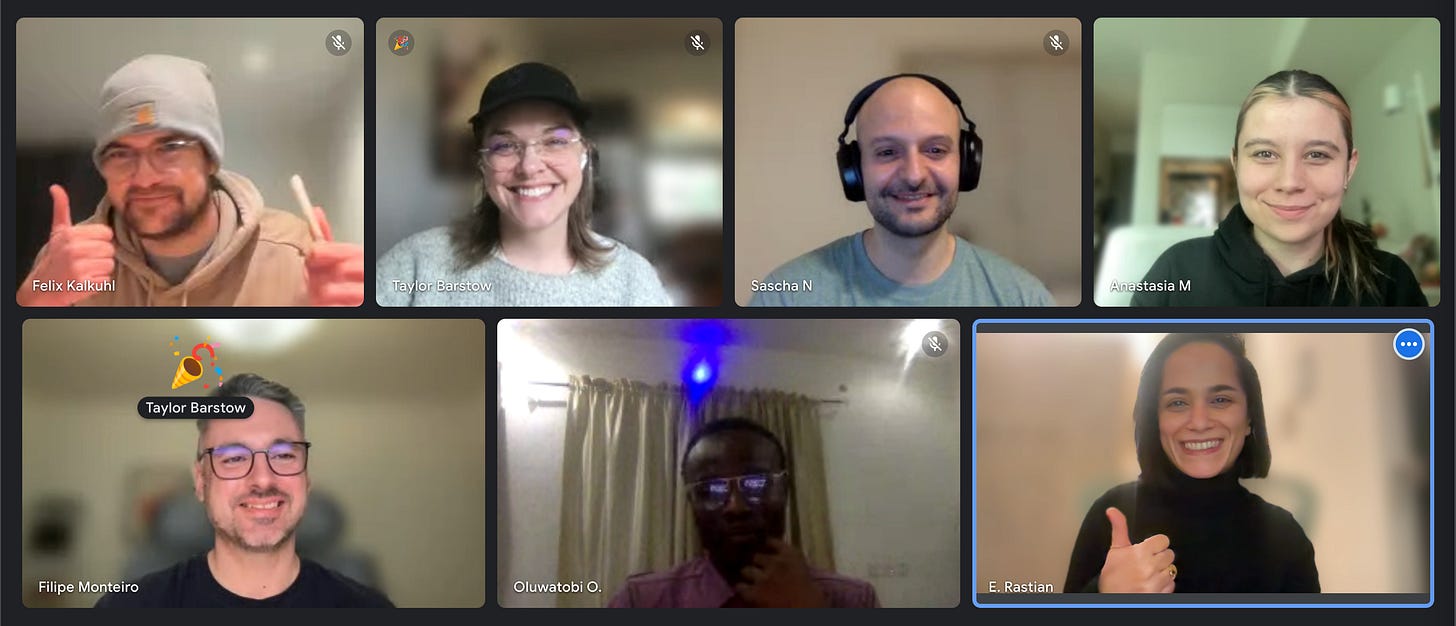Ideal vs. Real Design Processes
Where do idealized design processes fall short in real-world projects? How can we use them as a foundation to shape our own workflows?
We've all seen them: the sleek, linear diagrams promising a seamless journey from problem to solution. The Double Diamond, the five-step frameworks, the meticulously crafted workflows. These idealized design processes, often presented in textbooks and conference slides, offer a comforting sense of order in the often chaotic world of design. But how often do they truly reflect the messy, unpredictable realities of our daily work?
In real-world projects, these frameworks often collide with constraints; shifting priorities, resource limitations, and the unpredictable nature of human collaboration. The question isn’t which design process is “correct”, but rather how to make processes adaptable to the realities of product teams and business needs.
This piece is based on the first session of Design Dossier, a bi-monthly series by The Guild of Working Designers. Each session explores a key product design topic through curated resources and group discussion.
The illusion of linearity
One of the most significant shortcomings of idealized processes is their inherent linearity. They often depict design as a series of sequential steps, implying that each phase is completed before moving onto the next. However, real-world design is rarely so tidy. We often find ourselves revisiting earlier stages, iterating based on new insights, and juggling multiple phases simultaneously.
The messy middle: As highlighted in discussions and resources, the "messy middle" of the design process, where synthesis and ideation take place, is particularly resistant to rigid structures. This is where the magic happens, where disparate pieces of information coalesce into innovative solutions. Trying to force this creative chaos into a linear framework can stifle exploration and limit potential outcomes.
Contextual adaptability: Projects vary wildly in scope, complexity, and constraints. A process that works for a large-scale enterprise project may be entirely unsuitable for a rapid prototype. Idealized processes often fail to account for this contextual variability, leading to inefficiencies and frustration.
The human element
Design is inherently a human-centered endeavor, yet idealized processes often overlook the complexities of human interaction. Key factors that frequently influence the effectiveness of frameworks include, but are not limited to:
Stakeholders operate on different timelines. Design teams might need in-depth research, while product teams focus on speed, and engineering teams prioritize feasibility.
Cross-functional collaboration is unpredictable. A well-defined process doesn’t guarantee seamless execution—misaligned goals and competing priorities often create friction.
Process should serve people, not control them. If a team feels constrained by a process rather than empowered by it, creativity and ownership suffer.
From blueprint to compass
Rather than viewing idealized processes as rigid blueprints, we should consider them as flexible compasses that guide our design journey.
Define essentials, adapt the details. Establish high-level design phases, but allow teams to modify workflows based on the project’s context and constraints. Recognize that design is an iterative and non-linear process.
Integrate with product & engineering, not in isolation. Design shouldn’t run as a separate track. Align iterative validation within broader product and development cycles rather than enforcing standalone processes.
Measure outcomes, not steps. Success isn’t about following a process perfectly. It’s about decision-making efficiency, team alignment, and impact. Give the "messy middle" the time and attention it deserves. Allow for exploration, experimentation, and iteration. Define metrics that reflect progress rather than compliance.
Evolve processes over time. What works today might not work tomorrow. Design leaders should regularly evaluate and refine workflows based on feedback and changing business needs. Build a culture of trust and autonomy that empowers designers to take ownership of their work and make informed decisions.
Communicate Effectively. Use process frameworks as a tool for communication and alignment, rather than a rigid set of rules. Clearly communicate the rationale behind your approach and be transparent about the iterative nature of design.
Understand the Importance of Context. Be aware of the environment in which you are working. Consider the stakeholders, the company culture, and the development process.
The true power of design lies not in rigid adherence to a prescribed path, but in empowering teams to navigate the inherent complexities of real-world challenges. By understanding the limitations of idealized processes, we empower teams to navigate complexity with agility, aligning design solutions with core business goals. This fosters a scalable, flexible approach that thrives in real-world application, ensuring impactful and sustainable innovation.
Session contributors
This article was enriched by the insights and experiences shared by the participants of the first Design Dossier session, held on 27 February 2025. Huge thanks to:
Filipe Monteiro, Taylor Barstow, Sascha Naji, Anastasia Mikhailitchenko, Tricia Okin, Oluwafemi Olajimbiti and David D. Vallejo. Their openness and thoughtfulness made this discussion truly special.
The session was facilitated by Ellie Rastian and co-facilitated by Felix Kalkuhl, who guided the discussion and ensured space for meaningful reflection.
Resources discussed
We grounded our session with a variety of insightful resources, including:
Michelle Morrison – Process vs. Practice
Maximilian Schmidt – The Illusion of Different Design Processes
Jeff Humble – WTF is a Design Process?
The Service Design Show – Is the Double Diamond Misleading?
Bonus reads and resources shared during the session
Join future sessions
Design Dossier is a bi-monthly session series created by Ellie Rastian, each one diving into a different product design topic through curated resources and group discussion.
The session format developed by Ellie Rastian, Maximilian Schmidt, and Felix Kalkuhl forms the foundation for all future editions, focusing on reflection, real-world insights, and shared learning.
If you'd like to join us in future sessions, become part of The Guild of Working Designers and stay in the loop!
Join via: Guild application form
LinkedIn: The Guild of Working Designers

